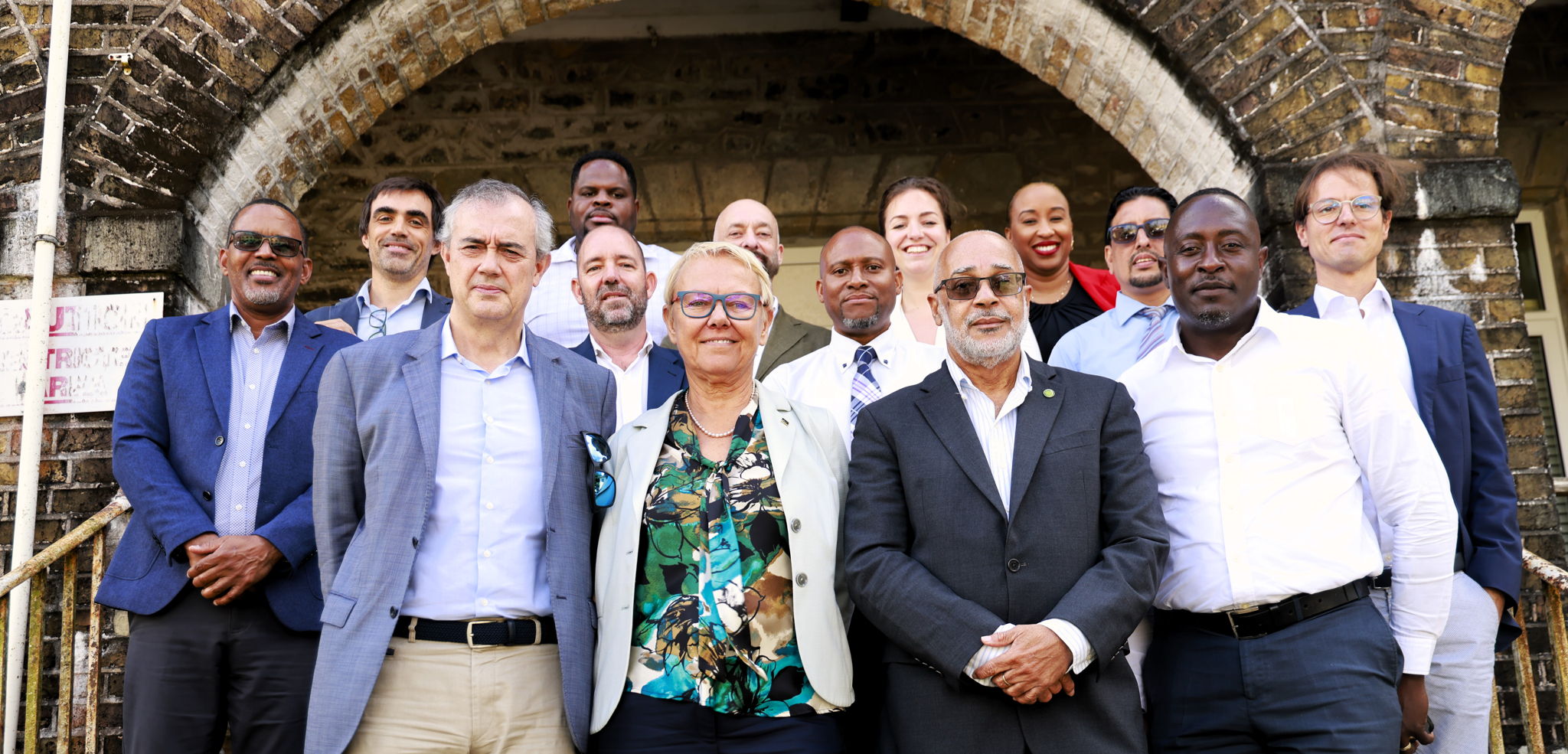EU Director Inaugurates Reconstructed Piaye Bridge in St. Lucia and advance discussions on the Global Gateway Investment Agenda
Media Release Courtesy of the Delegation of the European Union to Barbados, the Eastern Caribbean States, the OECS, and CARICOM/CARIFORUM
European Union Director for the Caribbean and Latin America, Félix Fernández-Shaw visited St. Lucia from 21-23 January, where he had bilateral meetings with the Organisation of Eastern Caribbean States (OECS) Commission and the Governments of the OECS countries.
The main purpose of Mr. Fernandez-Shaw’s mission was to advance discussions on the EU-LAC Global Gateway Investment Agenda (GGIA) with partner countries in the Eastern Caribbean. The GGIA represents the European Union’s offer to bridge the investment gap in the region, utilising public financing to leverage private capital and investment. The Investment Agenda provides a framework for the EU’s continued support to ongoing efforts in the region to advance a green and just transition.
With Dr. Didacus Jules, Director General of the OECS, Mr Fernandez-Shaw discussed how to strategically work in the areas of renewable energy, water management, climate finance, digital transition, maritime transport and sargassum, including to attract European investments in these sectors. A productive meeting also took place with OECS Ministers in charge of digital affairs, in order to discuss the opportunities for the OECS countries to advance their ambitious digital agenda in partnership with the EU under the EU-LAC Digital Alliance.
Mr. Fernandez-Shaw also had bilateral meetings with Prime Minister Philip J. Pierre and other Ministers to discuss areas of mutual interest to St. Lucia and the EU, in particular the implementation of the GGIA in Saint Lucia.
Mr. Fernandez-Shaw also inaugurated the Piaye Bridge jointly with Prime Minister Pierre. The inauguration of the Piaye Bridge follows its reconstruction and expansion of the previous temporary single lane structure, after it was destroyed by an extreme weather trough in 2013 that cut off access to the south-western part of the island for 15 days.
Rehabilitation of the bridge was one of the major activities under the World Bank Disaster Vulnerability Reduction Project initiative, of which the EU contributed €6.1 million in grant aid specifically towards the bridge works and other infrastructure rehabilitation in Anse La Raye. The overall aim of the Disaster Vulnerability Reduction Project was to reduce St. Lucia’s vulnerability to Climate Change and extreme weather hazards.
The new 25-metre long double-lane structure is designed to withstand extreme hazard events, which are predicted to increase in frequency in the region, as a result of climate change. It is 1.6 metres higher than the original bridge to provide greater protection from potential elevated water levels during a flood event and facilitates easier passage of debris, reducing the potential for blockage and damage. The works at the site also included river training to ensure proper water flow beneath the bridge and replanting of trees that were destroyed during the trough to ensure the stability of the surrounding area.
Apart from St. Lucia, Director Fernandez-Shaw will also travel to Barbados, Trinidad and Tobago, as well as Jamaica.

